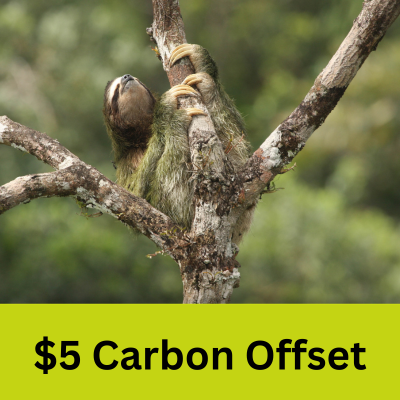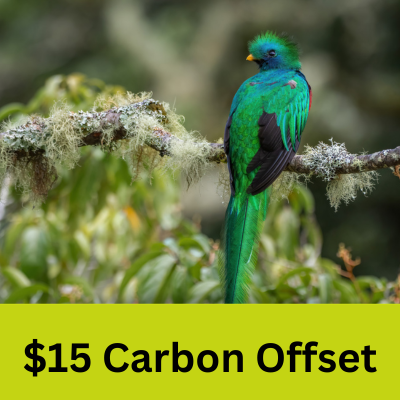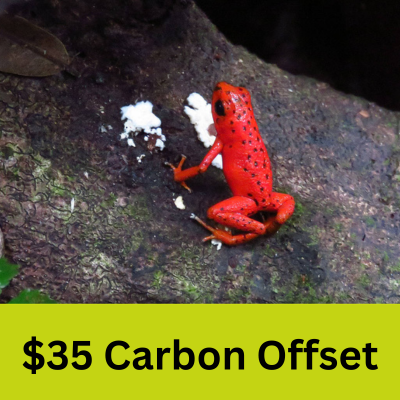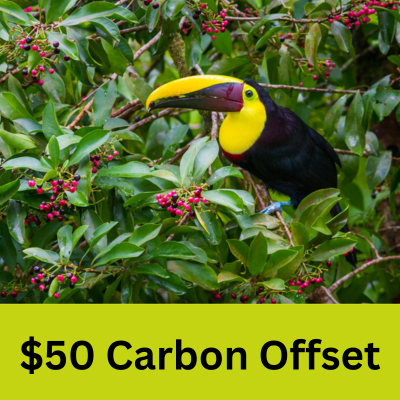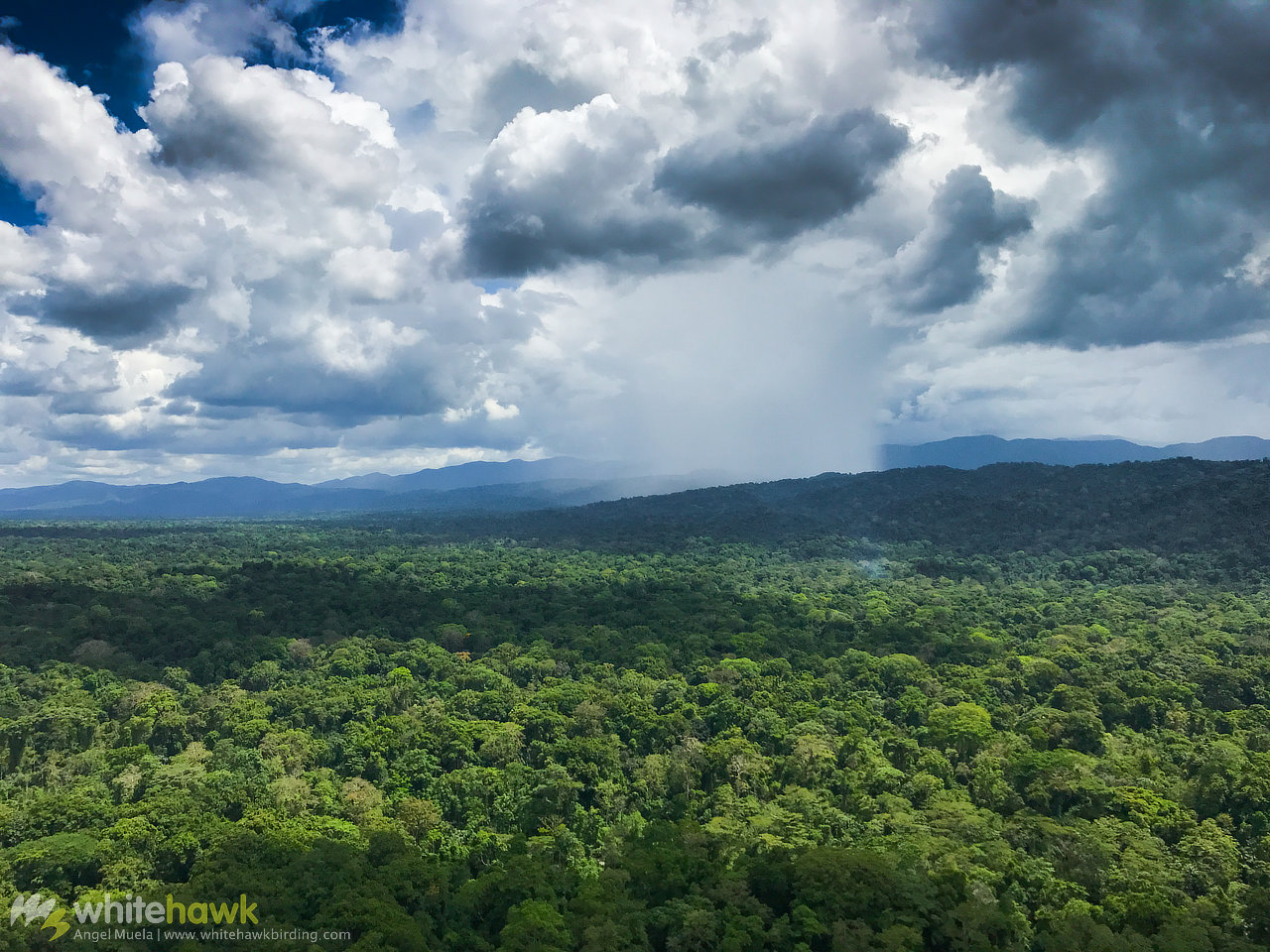
Our carbon offsetting project
Whitehawk’s Commitment
Whitehawk has diligently identified two projects in Panama that contribute significantly to its own goals of mitigating both the climate change and global biodiversity crises. We are excited to announce our partnership with CREA (Conservation through Research, Education, and Action) and Fundación Rapaces y Bosques de Panama to preserve forests in Panama, offset carbon emissions, and help mitigate some of the effects of Climate Change.
Studies have shown that ecotourism can play an important role in the conservation of many species and habitats around the world, while also contributing to local economies to support human well-being (Zacarias et al. 2017). Being in nature can also improve individual physical and mental health (Merker et al. 2021), and travel is a wonderful way to expose ourselves to new cultures, new ideas, and to foster new friendships. At Whitehawk, we are proud to be a part of the ecotourism industry. At the same time, we recognize that the fossil fuels burned during travel are contributing to the ever-growing problem of Climate Change. We are committed to doing our part to help offset carbon emissions used by our team and have made it easier for you to take part.
Join Us in Offsetting Carbon Emissions in a few Simple Steps
1. Calculate your carbon emissions. Click on this link to see how many tons of carbon will be emitted during an upcoming flight, or every day around your home.
2. Multiply the total tons of carbon you calculated by $15 (our recommended cost per ton for managing forests in Panama) to get a baseline.
3. Choose the amount you would like to contribute to offset your carbon emissions by clicking on a button below. Enter your credit card information and hit submit.
4. We will do the rest.
5. 100% of your donation will be divided between CREA and Fundación Rapaces y Bosques de Panama.
Our Partners
Why We Support CREA
CREA is a Panamanian non-profit organization protecting and managing intact tropical forest in Panama. They have an active research program on amphibians, birds, and small cats. CREA also works with local farmers and rural schools, providing much needed capacity and training in sustainable agriculture as well as knowledge dissemination on the value of ecosystems, in the hope that farmers recognize the value that intact forests bring to their farms, such as dependable weather, clean water and healthy soils.
Cocobolo Nature Reserve (CNR) was founded in 2006. It is 400ha large and protects both lowland and cloud forest. It is situated in an area of central Panama (Chepo) where deforestation for cattle ranching has been rampant for the past 30 years, leaving approximately 30% of original forest cover within this spectacular valley landscape. CNR adjoins Guna Yala and is an essential buffer zone to this indigenous area. It is a mix of rainforest types leading to high heterogeneity and an enormous, globally significant, level of biodiversity with multiple endangered species.
CREA manages CNR to protect the forest, its biodiversity and for educational and research purposes. CREA has developed a research center within the reserve and host schools and universities, training both international and national students in tropical biology and conservation science.
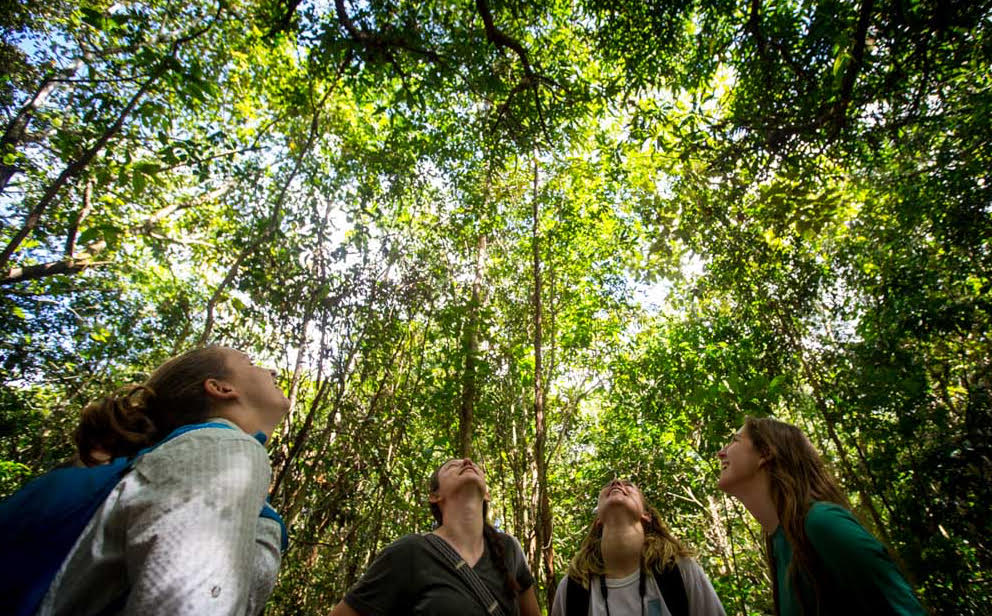
Why We Support Fundación Rapaces y Bosques de Panama
The Fundación Rapaces y Bosques de Panamá (FRBP) is a non-profit, non-governmental organization formally created in the Republic of Panama in 2018. However, its work history dates back to 2006. FRBP’s focal area of work is the Pacific region of the province of Darién. The forests in this region serve as a vital refuge for numerous endangered and endemic species of flora and fauna. They serve as a crucial natural bridge between Central and South America, facilitating the movement and exchange of species. FRBP utilizes the Harpy Eagle and other birds of prey as umbrella and iconic species to raise awareness among the local population about the importance of protecting biodiversity, ecosystems, and the environmental services they provide.
The aim is to conserve natural resources and promote sustainable use. By implementing a bottom-up conservation strategy, the FRBP strives to empower communities and cultivate sustainable conservation practices by establishing community-based organizations (CBOs). With a shared commitment to preserving our natural resources for future generations, they can create a network of CBOs where natural resources are protected and communities thrive. FRBP collaborates with strategic partners to conduct research, provide environmental education, strengthen local capacities, and implement nature-based actions with a local vision. This approach aims to establish an organic and sustainable model that safeguards the ecosystem services offered by forests, including carbon sequestration.
Their work is currently focused on protecting 46 pairs of Harpy Eagles, which make up the largest wild population in Central America. In addition to this, they are also working towards identifying and implementing economic and educational alternatives for the Embera and Wounaan communities that live in the reproductive habitats of this species. Their aim is to ensure that the coexistence between these communities and the Harpy Eagles is sustainable and that the ecosystem is protected for future generations.
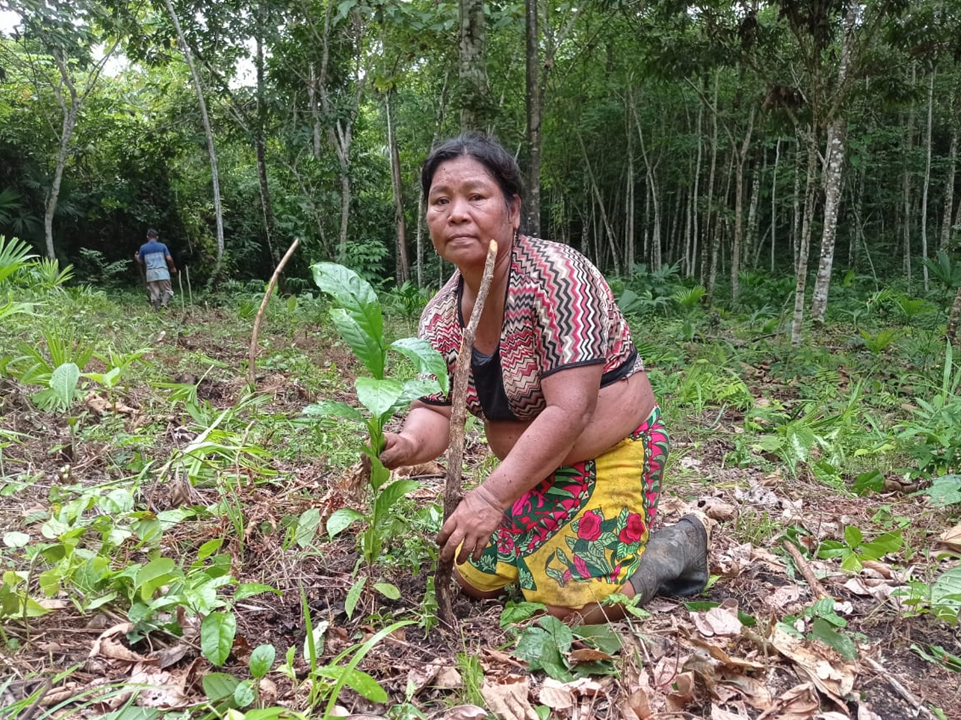
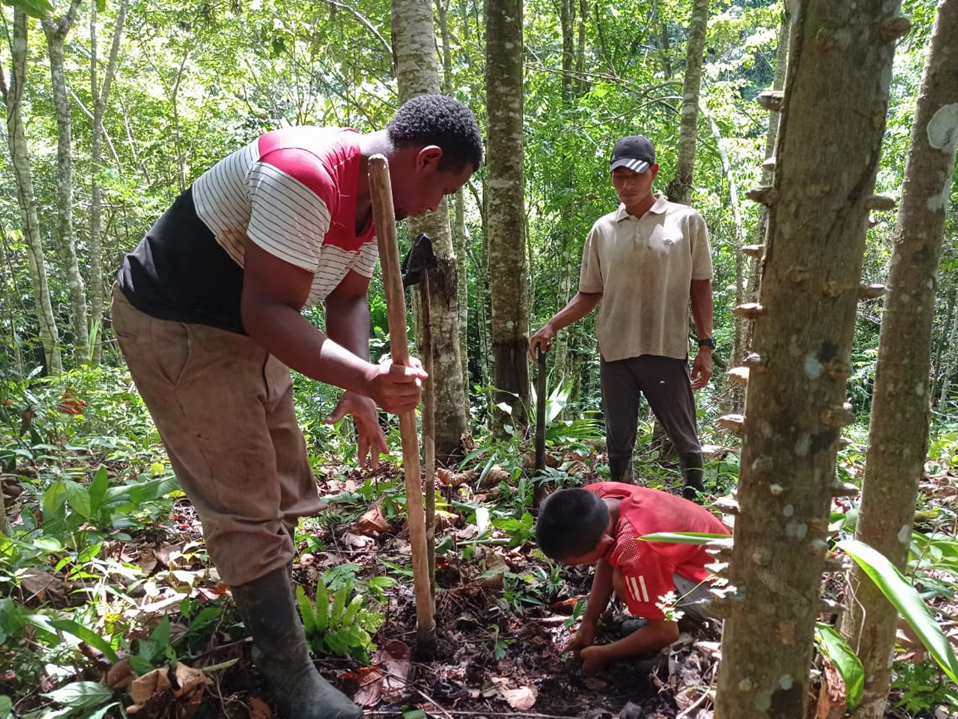
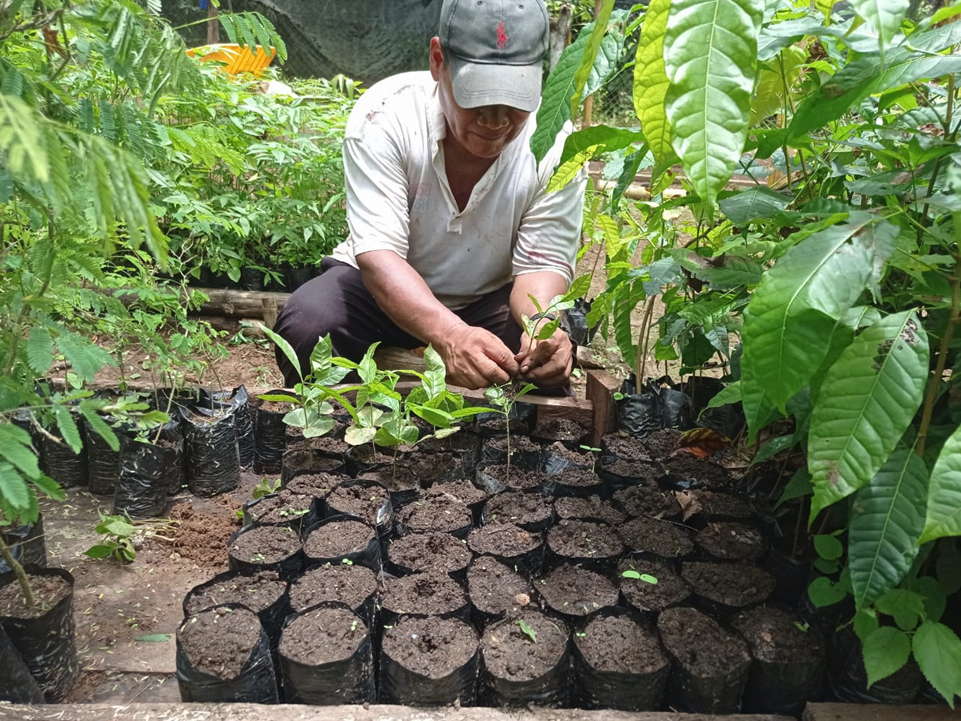
Learn more
Carbon Emission Sources
We all know that Carbon Dioxide (CO2) is emitted when fossil fuels are burned (to power our cars, to heat our homes, to generate electricity). Quite rightly, recent discussions and policies revolve around the phasing out of the use of fossil fuels due to their CO2 emissions that cause Global Heating and Climate Change.
However, another vast stock of carbon is regularly being burned that has the same effect as emitting fossil fuels, but it isn’t being talked about as much. These carbon stocks are held within the world’s forests and their destruction and burning cause approximately 14% of global human greenhouse gas emissions each year. Therefore, intact forests play a vital role in tackling the climate crisis since they not only store carbon but absorb carbon from the atmosphere as they grow.
Nowhere are forests more in peril than in tropical developing nations. Tropical forests store and absorb much more carbon than their temperate cousins due to the fact that they are growing all year round. Burning of these stocks is hugely damaging to our atmosphere. Thus, conserving existing forests, preventing them from being razed and burned, is an essential component of a global strategy to mitigate the worst effects of climate change by the end of this century.
What We Can Do
One of the most important actions we can take is to protect the most vulnerable forests immediately. These forests are called frontier forests, designated as such because they are adjacent to areas recently opened up for cattle ranching, agriculture, mining, road building, and other destructive practices.
Protecting and managing these forests can greatly contribute to climate change mitigation. It also has the added benefit of preserving high biodiversity and the wild things and wild places we love so much. In fact, tropical forests hold more than 80% (need to check the figure) of all known land species.
Globally, improvements to land management could provide an estimated 37% of the mitigation needed to stabilize warming below 2°C by 2039 (Griscom et al. 2017). Land management can also mitigate the negative effects that climate-induced ecosystem transformations have on biodiversity and watersheds, which influence ecosystem services that contribute to human well-being (Canadell and Raupach 2008, Griscom et al. 2017).
How A Donation Works
A study in 2008 found that CNR stores approximately 300,000 tons of CO2. When we support CREA, our donations directly help offset our travel and business operations, and contribute directly to its preservation – effectively locking this carbon within the forest while protecting its biodiversity and supporting local communities within and adjacent to this frontier forest in the heart of a global biodiversity hotspot.
How the Cost is Calculated
There is no standard cost for emitting a ton of carbon. However, some countries and the UN are attempting to determine the social cost of carbon, in other words how much does it cost to mitigate the impacts of 1 ton of carbon in terms of storm damage, health aspects, loss of food production etc. The US government concluded the price was $51 per ton. The UN has determined varying figures between $100 to $300.
For us and our partners, we are taking the approach of how much it costs to manage and conserve a tropical forest reserve over a significant number of years so that the carbon remains locked up. Results from this analysis conclude that at $15 per ton, managers could continue to conserve forests into the distant future.
If you would like to offset your travel and contribute towards mitigating the impacts of your carbon emissions while preserving biodiversity and supporting local communities, please click here to calculate your emissions from your next trip, and make a donation.

